1. A Myth of Monsters
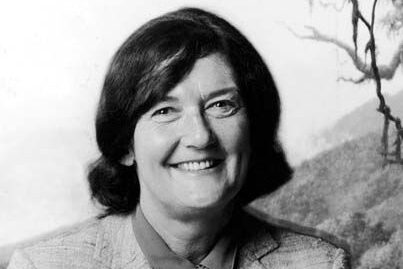
In the 1960s, most of the world believed gorillas were savage killers, dangerous animals that should be feared or destroyed. Movies and old explorers painted them as violent beasts, but Dian Fossey refused to believe it. She journeyed deep into the misty forests of Rwanda and found something entirely different. The gorillas were gentle, intelligent, and deeply emotional. By living among them, she revealed a truth that changed everything. They were not monsters at all but complex creatures capable of love, play, and loyalty. Her discovery didn’t just rewrite science books; it touched hearts. The moment she sat quietly beside them, the myth died, and the world began to see what it had long misunderstood.
2. Into the Mountains
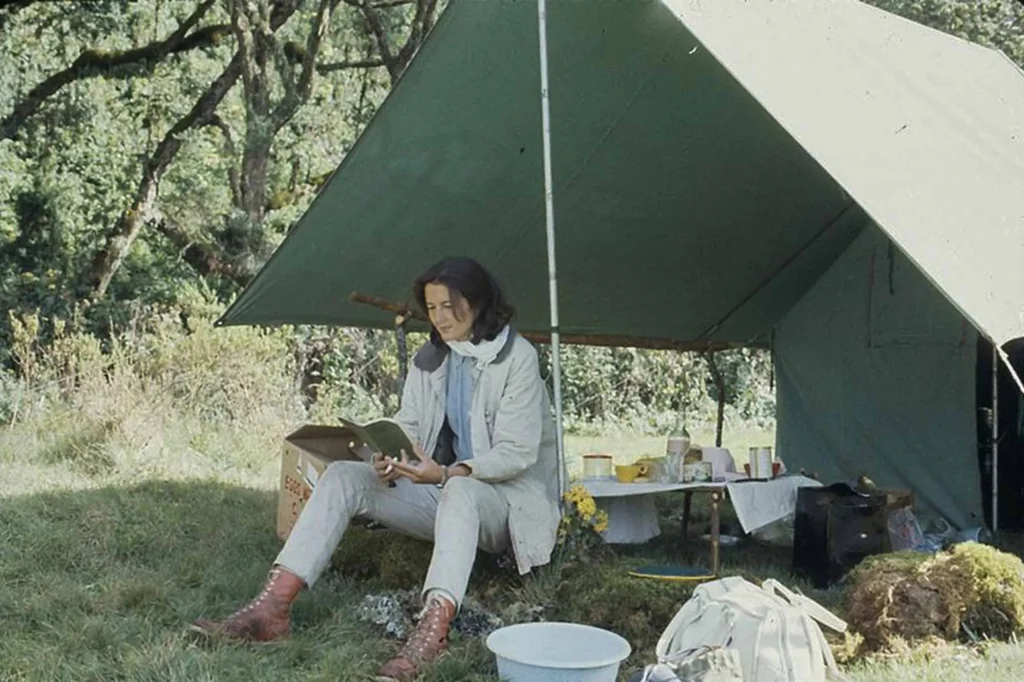
Fossey built her camp high in Rwanda’s Virunga Mountains, a place few dared to explore. The air was thin, the nights cold, and the isolation complete, but she found peace there. The mist-covered slopes became her world, her home, and her classroom. Each morning, she hiked through damp forests to find the gorillas, patiently observing them for hours. The harsh weather and loneliness tested her strength, but the reward was pure connection. In those quiet mountains, she found a sense of purpose that comfort could never give. Every day among the gorillas brought her closer to understanding life beyond human walls, a life shaped by patience, instinct, and deep, silent respect.
3. The First Friendships
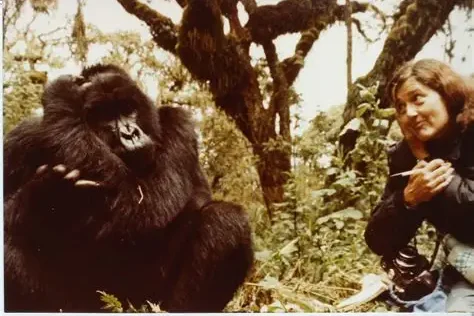
At first, the gorillas ran whenever she approached, frightened by the unfamiliar figure in their forest. But Fossey refused to give up. She began mimicking their movements, softly grunting to show she meant no harm, and even chewing leaves as they did. Over time, their fear melted away. One curious youngster reached out and touched her hand, marking the beginning of trust. Soon they played beside her, pulling gently at her hair and tumbling around her feet. These moments showed the world that wild gorillas could form bonds with humans based on understanding, not fear. That simple friendship rewrote the story of gorillas forever, replacing terror with tenderness and respect with wonder.
4. The Power of Patience
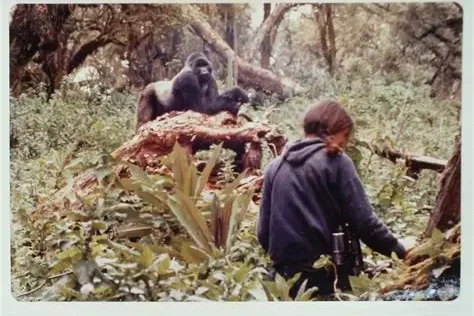
Fossey learned that studying gorillas required more than scientific curiosity; it demanded patience. She never forced her presence or tried to control their behavior. Instead, she waited quietly, allowing the gorillas to reveal themselves on their own terms. Days often passed with little happening, but when they finally accepted her, the moments were magical. Through stillness, she saw them laugh, play, and care for one another. Her gentle method became a model for future researchers, proving that knowledge grows from respect, not interference. In a world that often rushes to results, Fossey’s patience reminds us that the most meaningful connections can only unfold slowly, through trust and quiet persistence.
5. Family Bonds
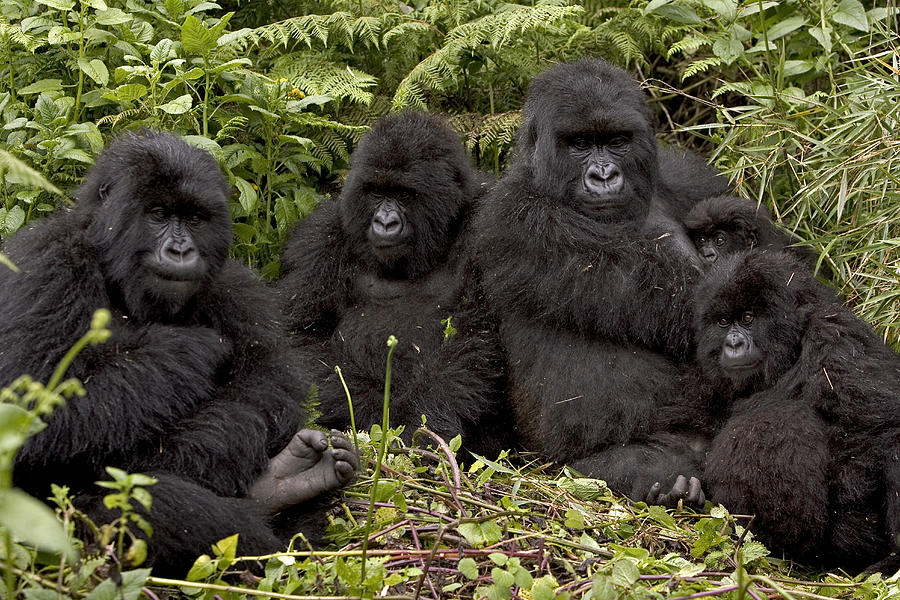
Life among the gorillas unfolded like a familiar story of family. The powerful silverback male wasn’t a brute but a steady protector who led with calm confidence. Mothers were affectionate and attentive, keeping their babies close at all times. Young ones played endlessly, learning life’s lessons through joy and mischief. Fossey watched their tenderness with awe, realizing how much it mirrored our own families. The structure she saw wasn’t chaos but harmony built on love and loyalty. It changed the way people viewed gorillas forever. In their forests, she discovered that the roots of family, care, and responsibility run far deeper than species or language could ever divide.
6. Emotional Lives
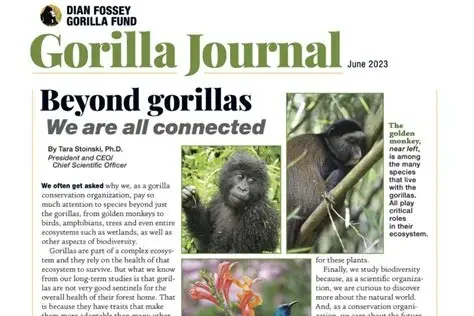
Her journals filled with stories that captured the gorillas’ emotions in beautiful, heartbreaking detail. They embraced one another, teased playfully, and even grieved for lost companions. Fossey realized these were not mindless creatures but emotional beings capable of love, sorrow, and laughter. Watching them mourn showed her that compassion wasn’t uniquely human. It belonged to all living things that care deeply. The discovery shaped how scientists viewed animals and their inner worlds. By acknowledging gorilla emotions, she gave the world a new respect for the lives we share this planet with, reminding us that feelings are the language of all hearts, whether human or wild.
7. Shattering Old Science
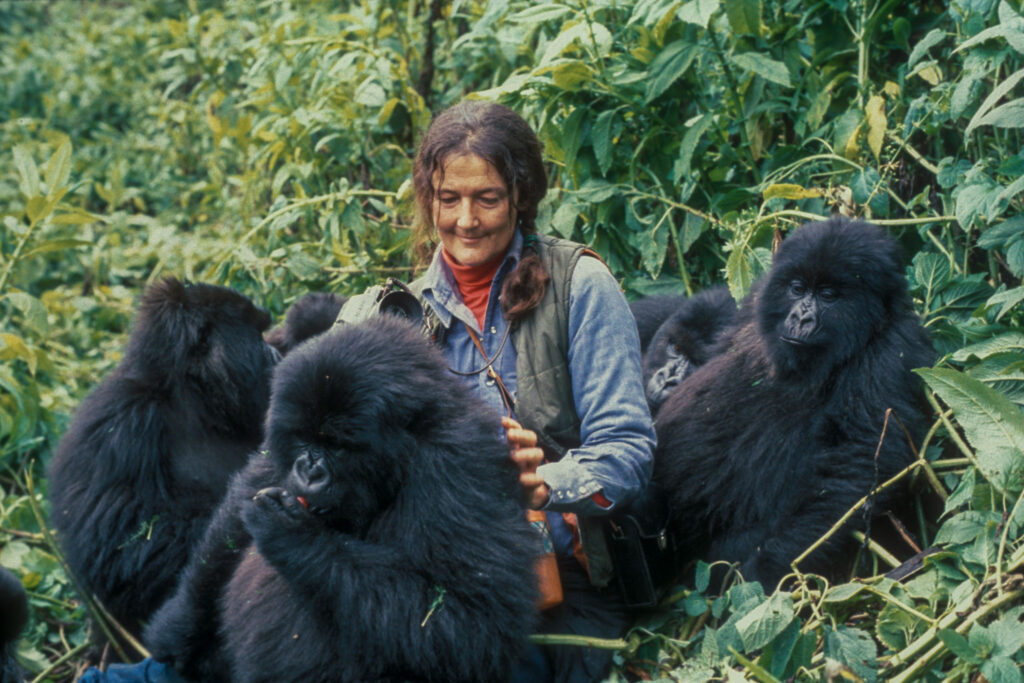
Before Fossey, most researchers studied gorillas from afar, often through fear or weapon scopes. Few believed it was possible to live among them peacefully. She changed that forever. By immersing herself in their world, she introduced a new kind of science built on relationship, empathy, and observation. Her work opened the door for future primatologists to study animals not as subjects but as sentient beings. She helped turn field research into something deeply personal and human. Through her courage, science learned that understanding requires connection, not distance, and that true discovery often begins when you are brave enough to listen instead of control.
8. Lessons for Parenting
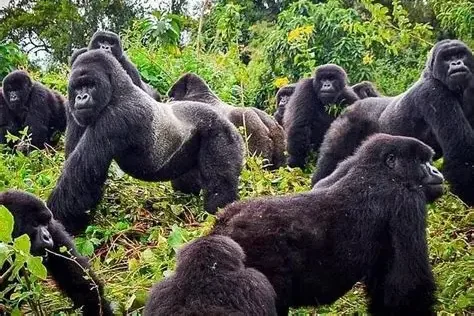
Watching the gorilla mothers, Fossey found unexpected wisdom about raising the young. They carried their babies constantly, comforted them when they cried, and taught them through gentle play. The young learned patience, kindness, and resilience from constant closeness. Fossey noted that love, not fear, shaped their behavior and helped them grow strong and secure. These lessons reflected back to human parenting, echoing ideas that affection builds confidence. In every tender hug and reassuring glance, Fossey saw the foundation of healthy families. Her research reminded parents everywhere that connection, care, and presence are the true measures of strength, not control or harsh authority.
9. Lessons for Leadership
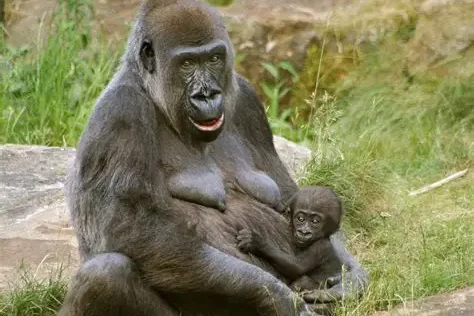
The silverback’s leadership fascinated Fossey. He was powerful but calm, commanding respect without violence. When disputes broke out, he intervened gently, guiding the group toward peace. His authority came from care, not fear. Watching him taught her that leadership doesn’t mean domination but service and protection. Many people later compared his style to what modern workplaces now call “empathetic leadership.” She saw that true power lies in patience, listening, and setting an example others trust. The gorilla family mirrored humanity’s best potential for cooperation, reminding us that leadership built on respect creates harmony, not fear.
10. Conservation Begins
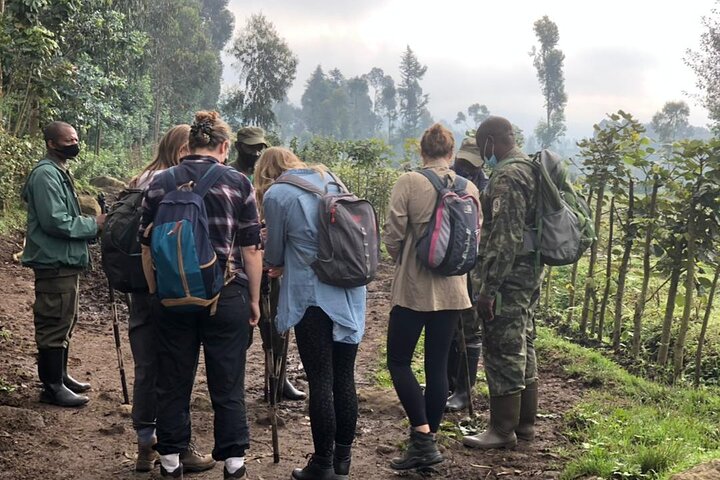
When Fossey shared her stories and photos, the world finally saw gorillas as they truly were. People who once viewed them as dangerous began to see families, tenderness, and vulnerability. Her work inspired global conservation efforts, leading to new laws and protected parks. Tourists came not to hunt but to admire. Her compassion awakened something collective, a realization that our survival is tied to theirs. Every gorilla rescued, every forest saved, carries her influence. What began as one woman’s quiet mission in the mist became the foundation of modern wildlife protection and an enduring symbol of how empathy can heal the planet.
11. The Poaching Crisis
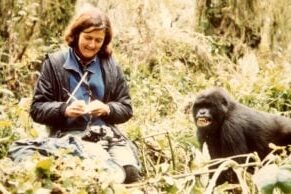
Fossey’s greatest heartbreak came from poaching. She discovered gorillas killed for trophies and infants taken from their families. The grief she witnessed was unbearable. Determined to act, she removed snares with her own hands and confronted hunters face to face. Her courage made her enemies, but it also inspired the world to fight alongside her. Through her relentless activism, she sparked the early anti-poaching movement, long before it became a global cause. Every trap destroyed, every life saved was a small victory in her war for compassion. Her devotion showed that protecting life sometimes means standing completely alone.
12. Her Violent End
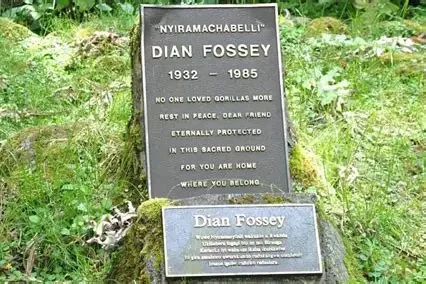
In 1985, Dian Fossey’s body was found in her remote mountain cabin, the victim of a violent attack. The killer was never identified, but many believed it was linked to her unyielding fight against poaching. Her death sent shockwaves through the world. Yet in tragedy, her mission found immortality. People who never met her felt her spirit through her words, her research, and her love for the gorillas. Her passing turned her into a symbol of sacrifice and courage, a reminder that passion can be both powerful and dangerous. Though her life ended abruptly, her cause became unstoppable.
13. The Legacy of Karisoke
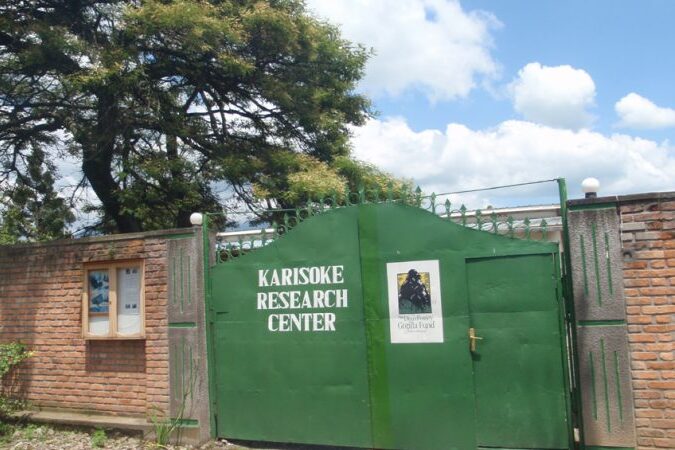
After her death, many thought her work would fade away, but the Karisoke Research Center survived. Today it thrives under the Dian Fossey Gorilla Fund, run largely by Rwandan scientists and conservationists she once trained. The center continues her research, protects gorilla families, and teaches local communities about conservation. Her dream of a safe home for gorillas didn’t just live on; it expanded. Karisoke stands as a living tribute to her belief that knowledge and compassion belong to everyone. What began as a single camp in the mist became a legacy of hope that inspires new generations.
14. Gorillas Today
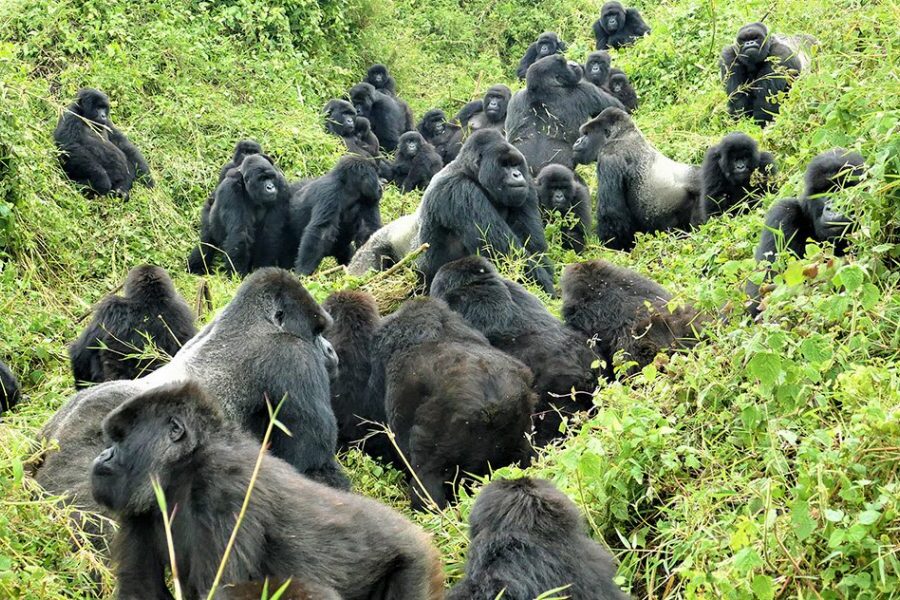
When Fossey began her work, mountain gorillas were on the brink of extinction, with only a few hundred left. Today, their numbers have doubled, a rare success story in conservation. Though still endangered, they are one of the few great apes showing recovery, thanks to the awareness her work created. Every tourist visit and donation traces back to her voice echoing through time. The gorillas she loved are now symbols of resilience and proof that one person’s dedication can restore what the world once thought lost forever.
15. A Mirror to Ourselves
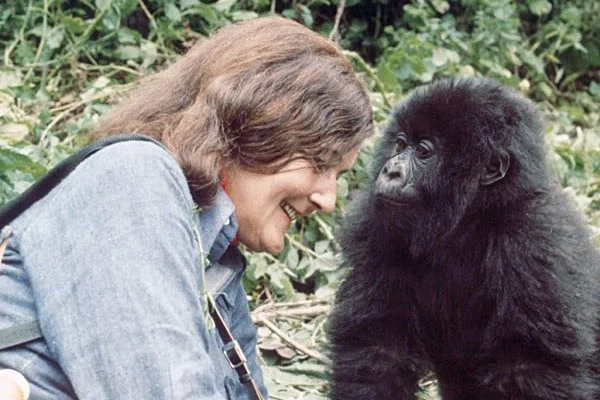
As Fossey watched the gorillas, she saw reflections of humanity in their lives. They played, argued, loved, and mourned just as we do. The similarities were impossible to ignore. Her observations forced people to question how we treat other beings who share our emotions and intelligence. By showing that gorillas feel deeply, she blurred the line between humans and animals. Her work invited everyone to look inward, to find compassion not through superiority but kinship. The gorillas became a mirror, revealing our shared need for love, community, and belonging.
16. Lessons for Today’s World
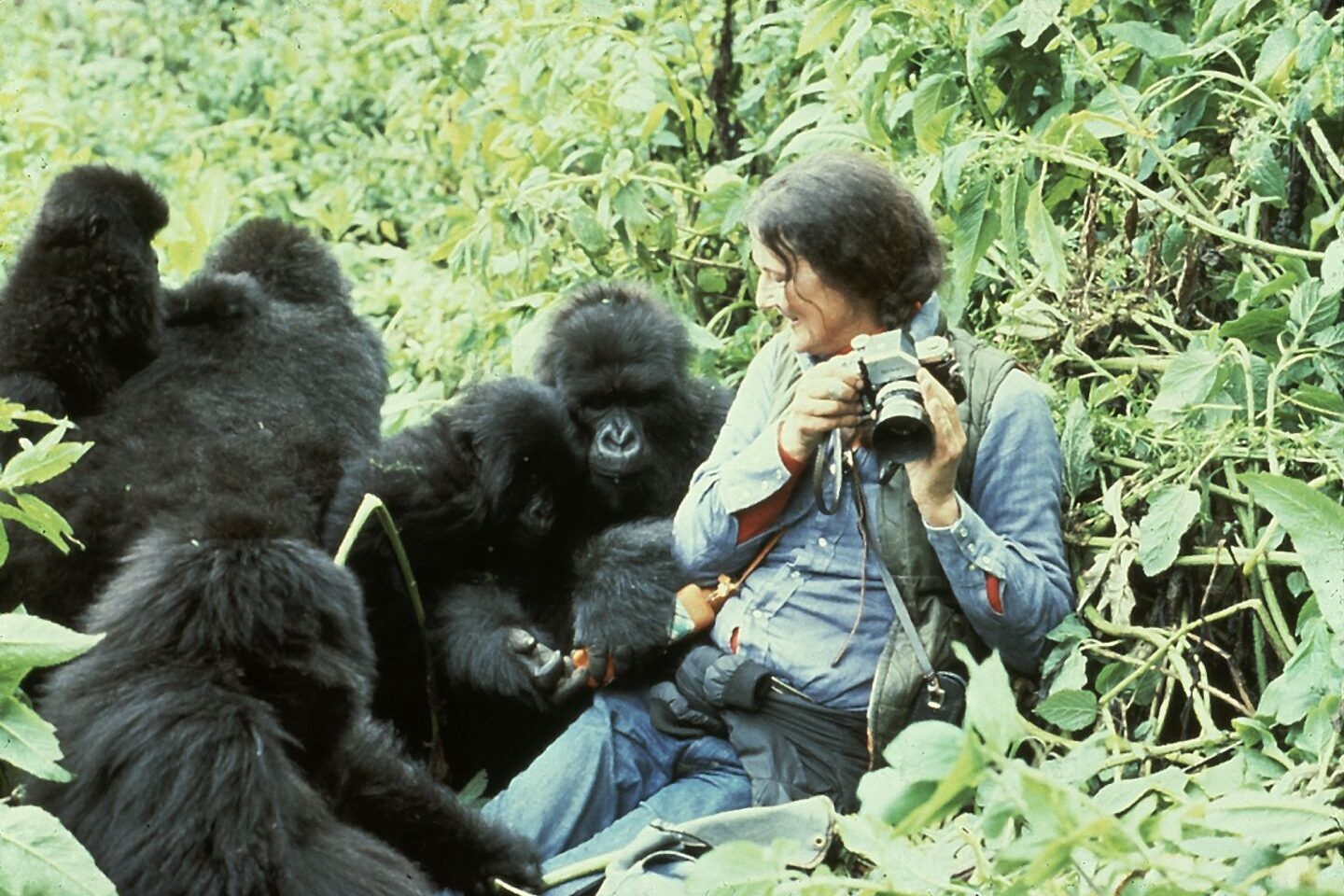
The forests where Fossey once walked still whisper her message. In a time of climate change and deforestation, her lessons are more urgent than ever. Protecting gorillas means protecting forests, water, and the balance that sustains all life. Her work reminds us that conservation is not about saving animals alone but about saving ourselves. Every tree preserved and every habitat restored connects back to the truth she lived for: nature’s survival and ours are bound together. Her story continues to guide modern environmental movements worldwide.
17. From Gorillas to Empathy
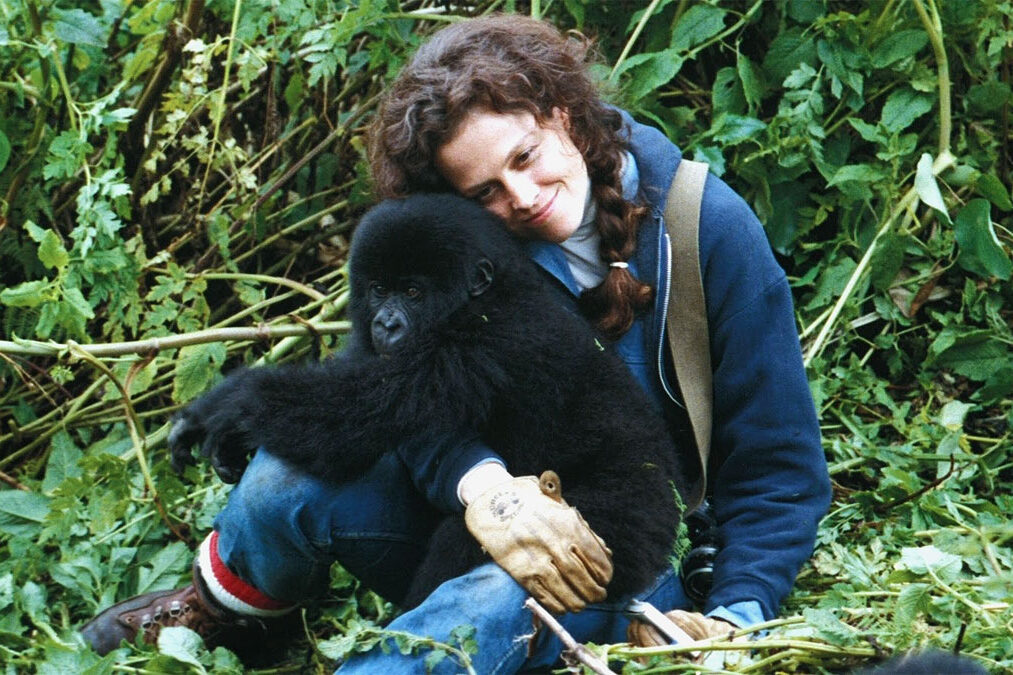
Beyond science, Fossey left the world a moral lesson about empathy. She showed that understanding another species requires patience, respect, and open-heartedness. Her philosophy now guides sanctuaries, therapy programs, and even education systems built on compassion. The gorillas taught her that love crosses boundaries of language and form. In learning about them, she reminded humanity how to feel again. Her work remains proof that kindness is a universal language and that empathy, not dominance, defines true intelligence and strength.
18. The Final Lesson
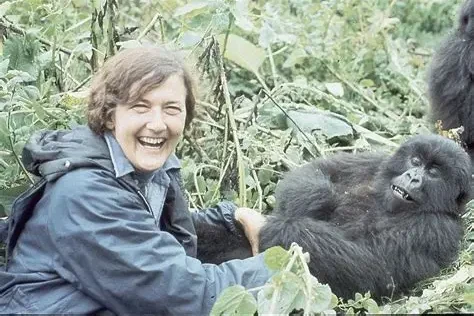
Dian Fossey entered the mist to study gorillas but discovered something far greater. Through years of devotion and sacrifice, she revealed that connection is life’s truest purpose. Her journey was never just about animals; it was about what makes us human. She taught the world that protecting others, whether human or wild, is how we protect the best parts of ourselves. Her story closes with a quiet truth: when we choose compassion, we choose survival. Her mountains still remember her footsteps, and her lesson continues to echo across generations.
This story Dian Fossey’s Gorillas: 18 Lessons from the Woman Who Showed Us Ourselves was first published on Daily FETCH


